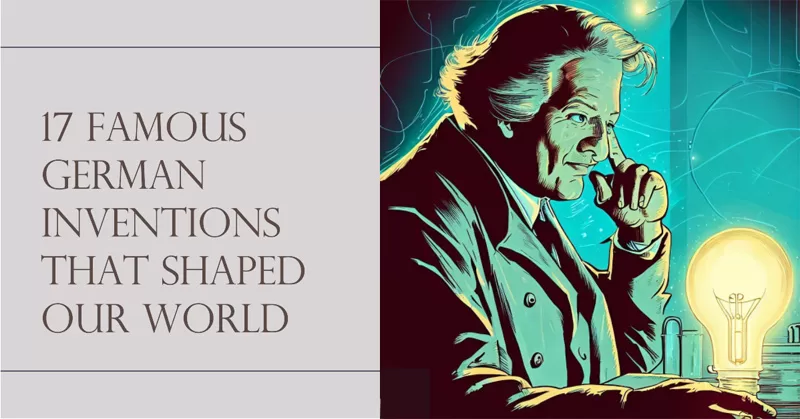
Have you ever wondered where some of the most brilliant inventions in our daily lives come from? In today’s fast-paced world, we often take for granted the objects that make our lives easier, more enjoyable, and more connected.
How have German inventions influenced modern technology?
Germany, the land of poets and thinkers, has long been an innovation powerhouse, giving birth to a plethora of famous German inventions that have shaped our world in profound ways.
Buckle up and join us on this fun journey through some of the top German inventions and the inspiring stories behind them.
Zooming Through Time: The Automobile
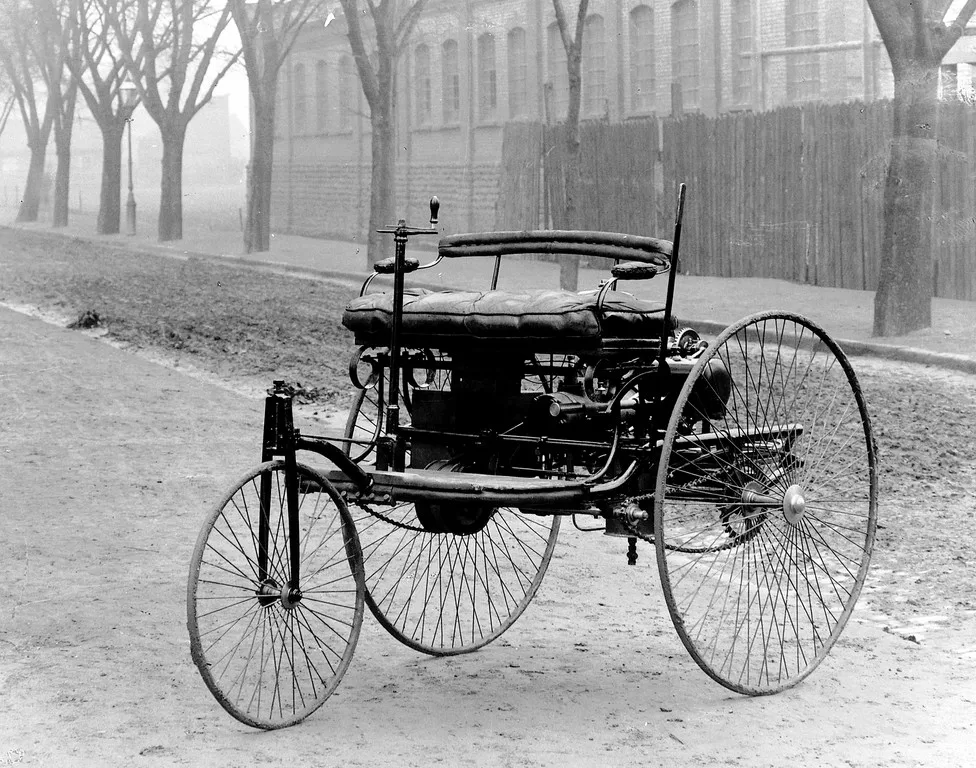
Benz Patent-Motorwagen Nr. 1
Picture this: it’s the late 19th century, and Karl Benz has just unveiled his groundbreaking invention, the first-ever gasoline-powered automobile. This marvel of engineering, known as the Benz Patent-Motorwagen, would revolutionize transportation and become the springboard for Germany’s world-renowned automobile industry.
Fast forward to today, and car manufacturers like BMW, Audi, and Mercedes-Benz continue to set the bar for quality, luxury, and performance with ever-new German automobile inventions.
The recognizability of the name “Benz” makes Karl Benz one of the most famous German engineers, even today.
Fun Fact: Karl Benz’s wife, Bertha Benz, embarked on the first long-distance car trip in 1888 to prove the reliability of her husband’s invention. The 65-mile journey garnered much-needed publicity and helped to launch the automobile industry.
Navigating the Digital Frontier: The Programmable Computer

Z3: the First Functional Programm-Controlled Automatic Calculating Machine, Deutsches Museum
Zuse’s Z3, completed in 1941, was an electromechanical computer designed for solving complex mathematical problems. It is widely considered the world’s first programmable computer, laying the groundwork for major advances in German computer technology.
Note: the invention of the computer remains a subject of debate, with two major contenders for the title of “Father of the Modern Computer”: Konrad Zuse from Germany and Alan Turing from Britain.
While both Zuse and Turing made groundbreaking contributions to computer technology, the debate over who invented the first computer is complex, as their inventions served different purposes and were developed independently.
Fun fact: Konrad Zuse’s first computer, the Z1, was built in his parents’ living room in Berlin between 1936 and 1938. Despite its eventual destruction during World War II, the Z1 marked the beginning of Zuse’s influential contributions to computer technology.
Peering into the Microcosm: The Electron Microscope
Invented by Ernst Ruska and Max Knoll in the early 1930s, the electron microscope has allowed scientists to study objects at an atomic level, providing invaluable insights into the building blocks of life and the universe.
In simple terms, an electron microscope works by using a beam of electrons instead of light to magnify and create highly detailed images of small objects.
Fun fact: the electron microscope can magnify objects up to 50 million times, far beyond the capabilities of traditional light microscopes.
Capturing Moments: The Camera
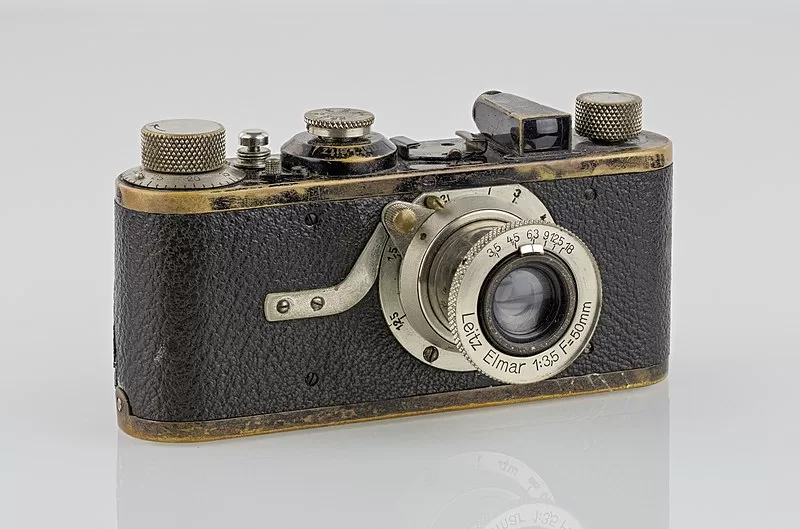
© Kameraprojekt Graz 2015 / Wikimedia Commons / CC BY-SA 4.0
In 1913, a German engineer named Oskar Barnack forever changed the way we document our lives by inventing the modern camera. Barnack’s invention allowed us to “freeze time,” capturing fleeting moments and preserving them for future generations.
Today, German companies like Leica continue to push the boundaries of photography, with integration of its lenses into flagship smartphones.
Reaching New Heights: The Zeppelin
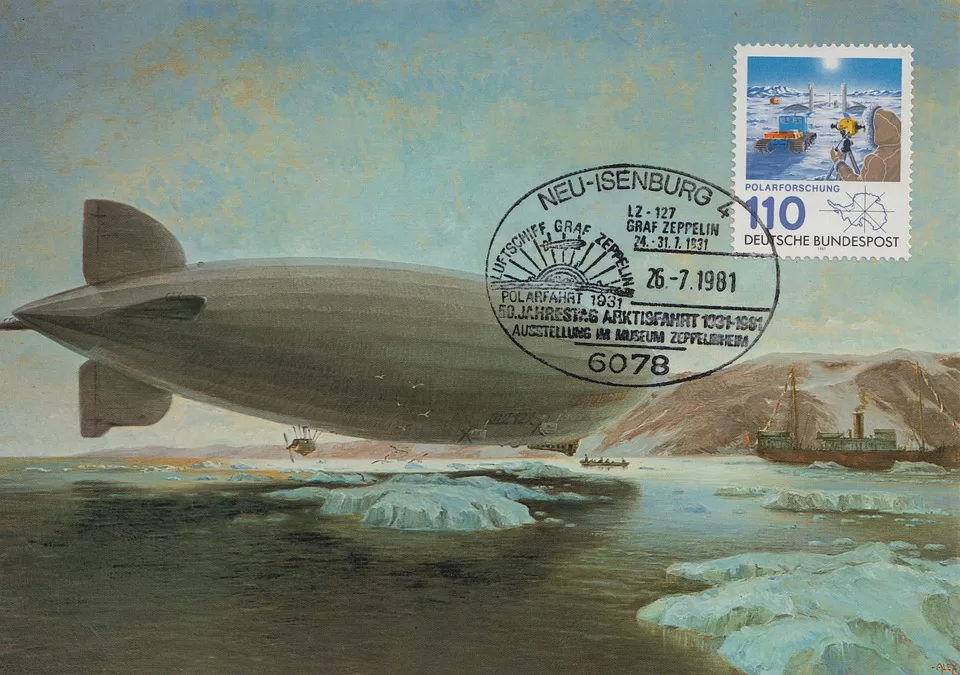
Count Ferdinand von Zeppelin, a true visionary of early German aerospace technology, brought the concept of air travel to new heights by inventing the Zeppelin airship in the early 20th century. These magnificent flying machines, often referred to as “gentle giants of the sky,” captured the world’s imagination and paved the way for modern airships and aviation technology.
Once seen as the future of air travel, Zeppelins are no longer widely used, primarily due to safety concerns, technological advancements, and cost factors. The most notable reason for their decline is the tragic Hindenburg disaster in 1937, where the hydrogen-filled airship caught fire and crashed, killing 36 people.
Following the Hindenburg disaster, helium was considered as a safer alternative to hydrogen due to its non-flammable nature. However, helium is more expensive and less readily available, making it less practical for large-scale use in airships.
Additionally, the development of faster and more efficient aircraft, such as airplanes and helicopters, contributed to the decline of Zeppelins. Today they have found niche applications in areas such as advertising, tourism, and aerial surveillance, where their slow speeds and maneuverability offer unique advantages.
Fun fact: The first Zeppelin took flight on July 2, 1900, and it was almost 420 feet long, which is roughly the length of a football field.
Saving Lives with German Technology: The X-ray Machine
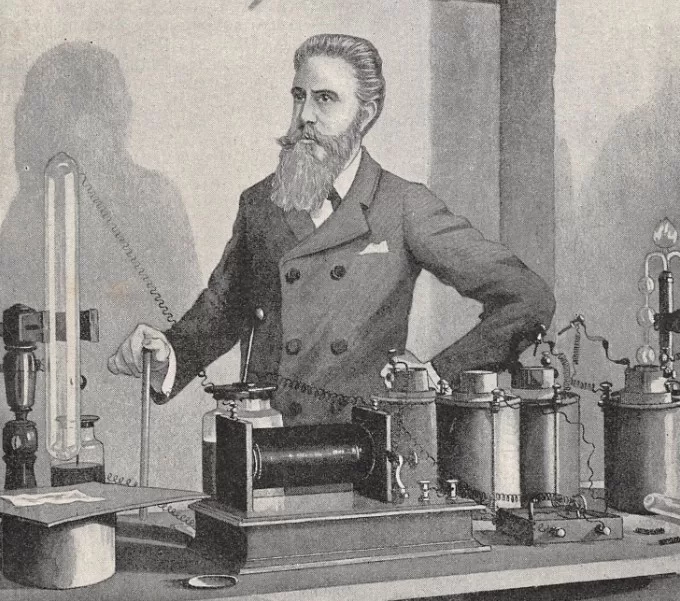
In 1895, Wilhelm Conrad Röntgen, a German physicist, made a groundbreaking discovery that would forever change the field of medical imaging: X-rays. By peering deep into the human body, Röntgen’s invention allowed doctors to “see the unseen” and diagnose a myriad of medical conditions with unprecedented accuracy.
The invention of X-ray is often considered one of the most important discoveries in German medical technology.
Today, X-ray technology continues to advance, and its applications extend far beyond medicine, from security screening to art analysis.
Fun Fact: Röntgen referred to X-rays as “X” because they were an unknown type of radiation. The name “X-ray” stuck as it was widely adopted by the scientific community. In Germany they are commonly known as “Röntgenstrahlen”.
A Pillar of Education: The Kindergarten

Friedrich Froebel, a German educator, established the first kindergarten in 1837 as a place for young children to learn through play and hands-on activities, laying the foundation for modern early childhood education. This just goes to show how not all famous German inventions are from the realm of hard sciences.
Fun fact: The term “kindergarten” comes from the German words “Kinder” (children) and “Garten” (garden), reflecting Froebel’s idea of nurturing young minds like flowers in a garden.
Fueling Creativity: The Printing Press
Johannes Gutenberg, a German blacksmith, and goldsmith transformed the world of communication and knowledge dissemination when he invented the movable type printing press in the mid-15th century. Gutenberg’s invention “flipped the script,” democratizing knowledge and laying the groundwork for modern mass media and publishing, from newspapers to books and beyond.
When we look German inventors and their impact on our world today, Gutenberg remains one of the most widely known names, even 580+ years later!
Fun fact: Gutenberg’s Bible, the first book printed using the movable type printing press, was a two-volume work that took nearly three years to produce. Only about 180 copies were printed, with fewer than 50 still known to exist today.
Chugging Along: The Diesel Engine

Invented by Rudolf Diesel in the late 19th century, the diesel engine was a major driver of German industrial revolution and has remained an essential part of various industries today, from transportation to construction.
Contrary to regular gasoline engines which rely on spark-ignition, diesel engines use compression-ignition. As air is drawn into the cylinder and compressed to a high pressure, its temperature rises dramatically. Diesel fuel is then injected into the hot, compressed air, causing it to ignite spontaneously.
Diesel engines tend to be more fuel-efficient, as they compress air to a higher degree, resulting in a more efficient combustion process. This efficiency often translates to better fuel economy and increased torque, making diesel engines well-suited for heavy-duty applications and towing.
Fun fact: Rudolf Diesel initialled aimed to create an engine that would run on to run on coal dust, and later switched to vegetable oil. Diesel hoped that his engine would help farmers and small businesses become more self-sufficient by allowing them to power their machinery with locally-produced vegetable oil.
German Medical Discoveries: Aspirin

Bottle with Aspirin, 1899. From Bayer Archives, CC BY-SA 3.0
Felix Hoffmann, a chemist working for Bayer, gave the world a powerful weapon against pain and inflammation when he developed aspirin in the late 19th century.
This small but mighty pill has since become a staple in medicine cabinets worldwide, offering relief to millions of people suffering from headaches, fever, and other ailments.
Aspirin is just one among many ground-breaking German chemistry discoveries, but it remains one of the most widely recognized.
Fun fact: Aspirin is derived from the bark of the willow tree, which has been used for medicinal purposes for thousands of years, dating back to the time of the ancient Egyptians and Greeks.
The Sky’s the Limit: The Glider

Construction drawing of the standard sail apparatus by Otto Lilienthal, Deutsches Museum
Otto Lilienthal, a German aviation pioneer, invented the first successful glider in the late 19th century, paving the way for the development of powered aircraft and modern aviation as we know it.
Fun fact: Lilienthal’s pioneering work earned him the nickname “The Flying Man,” and his glider designs inspired future aviation legends such as the Wright brothers.
Fanta-stic Refreshment: Fanta

Anniversary Edition “Fanta KlassiK”, SKopp, CC BY 4.0
During World War II, when the German subsidiary of Coca-Cola found itself unable to import the syrup needed to produce the classic soft drink, necessity became the mother of invention.
A new, fruity concoction was born: Fanta. This effervescent, orange-flavored beverage quenched the thirst of Germans during challenging times and eventually fizzled its way into the hearts of people around the globe.
Funtastic fact: Fanta got its name from the German word “Fantasie,” which means “imagination” in English. The name was suggested by a salesman during a brainstorming session to come up with a catchy name for the new soft drink.
A Staple Of Digital Music: MP3
In the late 1980s, a team of engineers at the Fraunhofer Institute in Germany cracked the code of digital audio compression, developing the MP3 format.
The MP3 format, short for MPEG-1 Audio Layer III, is a digital audio encoding and compression technology that revolutionized the way we consume music. At its core, the MP3 format utilizes perceptual coding, a psychoacoustic principle that removes audio data deemed inaudible or less important to human hearing.
By carefully analyzing the audio signal, the MP3 encoder identifies and eliminates certain sounds that are likely to be masked by louder, more prominent sounds, effectively reducing the file size without significantly impacting the perceived audio quality.
Once the dominant choice for digital music, the MP3 has gradually fallen out of favor due to several factors, including advances in audio technology, the rise of music streaming services, and shifting consumer preferences. But it still remains one of the most recognizable formats for digitally compressed sound files.
The first MP3 player, called the MPMan, was released in 1998 by a Korean company, a year before the more popular Diamond Rio PMP300, which is often mistakenly thought to be the first MP3 player.
Soaring to New Speeds: The Jet Engine
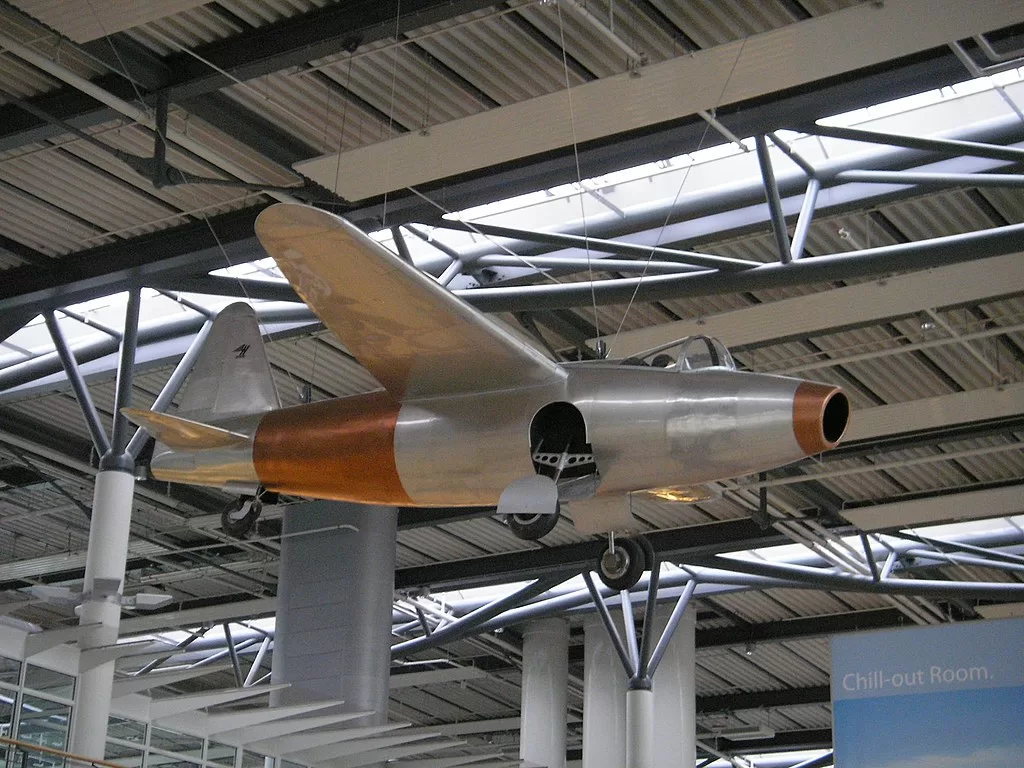
Replica of Heinkel He 178 in the airport arrival hall of Rostock-Laage
In the 1930s, Hans von Ohain and Frank Whittle, working independently from one another, developed the jet engine, a powerful invention that would propel humanity into the future. The jet engine transformed air travel and military aviation, enabling us to traverse vast distances and connect with people and places like never before.
The first jet-powered aircraft, the Heinkel He 178, took its maiden flight on August 27, 1939, in Germany, powered by Hans von Ohain’s jet engine design.
An Icon on Wheels: The Volkswagen Beetle

The brainchild of Ferdinand Porsche, the iconic Volkswagen Beetle emerged in the 1930s as a symbol of affordable and reliable transportation. With its distinct rounded shape and air-cooled engine, the Beetle captured the hearts of millions, becoming one of the most beloved and recognizable cars in history.
Not so fun fact: the original concept for the Volkswagen Beetle was commissioned by the Nazis, who wanted a mass-produced, affordable car for the German people. The car was initially called the “KdF-Wagen,” which stood for “Kraft durch Freude” (Strength Through Joy).
A Sweet Sensation: Gummy Bears

Hans Riegel, the founder of Haribo, brought joy and delight to the taste buds of the world when he invented gummy bears in the 1920s. These colorful, chewy treats have since become a staple in candy stores and a favorite of both children and adults alike.
The name “Haribo” is an acronym for Hans Riegel of Bonn, Germany, which is where the company was founded. The original gummy bears, called “Dancing Bears,” were larger than the ones we know today and were inspired by the trained bears seen at festivals and markets during that time.
Colorful Illumination: The Neon Sign

German physicist and glassblower, Heinrich Geissler, invented the first gas-discharge lamp in the 1850s, which eventually led to the development of neon signs.
Although the first neon signs were developed in the early 20th century, it was Geissler’s invention of the Geissler tube that laid the groundwork for this bright and colorful form of advertising and other German technological advances.
German Nobel Prize winners
Not only did many of the famous German inventors discussed above also receive Nobel Prizes for their ground-breaking discoveries, but German German innovation history continues until this day.
Here’s a list of notable Noble Prize Winners for German scientific discoveries, both historical and more recent:
- Wilhelm Conrad Röntgen (1901, Physics) – Discovery of X-rays
- Fritz Haber (1918, Chemistry) – Synthesis of ammonia, which enabled large-scale production of fertilizers and explosives
- Otto Meyerhof (1922, Medicine) – Discovery of the relationship between the consumption of oxygen and the metabolism of lactic acid in the muscle
- Carl Bosch (1931, Chemistry) – Invention of high-pressure industrial chemistry, particularly the Haber-Bosch process
- Werner Karl Heisenberg (1932, Physics) – Creation of quantum mechanics and the uncertainty principle
- Ernst Ruska (1986, Physics) – Development of the electron microscope
- Gerhard Ertl (2007, Chemistry) – Studies of chemical processes on solid surfaces, particularly the development of the modern field of surface science
- Stefan Hell (2014, Chemistry) – Development of super-resolved fluorescence microscopy
- Joachim Frank (2017, Chemistry) – Development of cryo-electron microscopy for high-resolution structure determination of biomolecules in solution
- Reinhard Genzel (2020, Physics) – Discovery of a supermassive compact object at the center of our galaxy
Summary
As we’ve journeyed through the fascinating world of famous German inventions, it’s evident that Germany’s innovative spirit has left an indelible mark on our lives.
From life-saving German inventions in medicine to sweet treats that bring a smile to our faces, these ingenious ideas have shaped our world in countless ways. So, the next time you hop into your car, snap a photo, or even enjoy a refreshing Fanta, take a moment to appreciate the remarkable minds behind these famous German inventions that have propelled us into the future.
As Albert Einstein, another brilliant German mind, once said, “Imagination is more important than knowledge. For knowledge is limited, whereas imagination embraces the entire world, stimulating progress, giving birth to evolution.” Germany’s innovative history is a testament to the power of imagination and the boundless potential of the human spirit.
–

